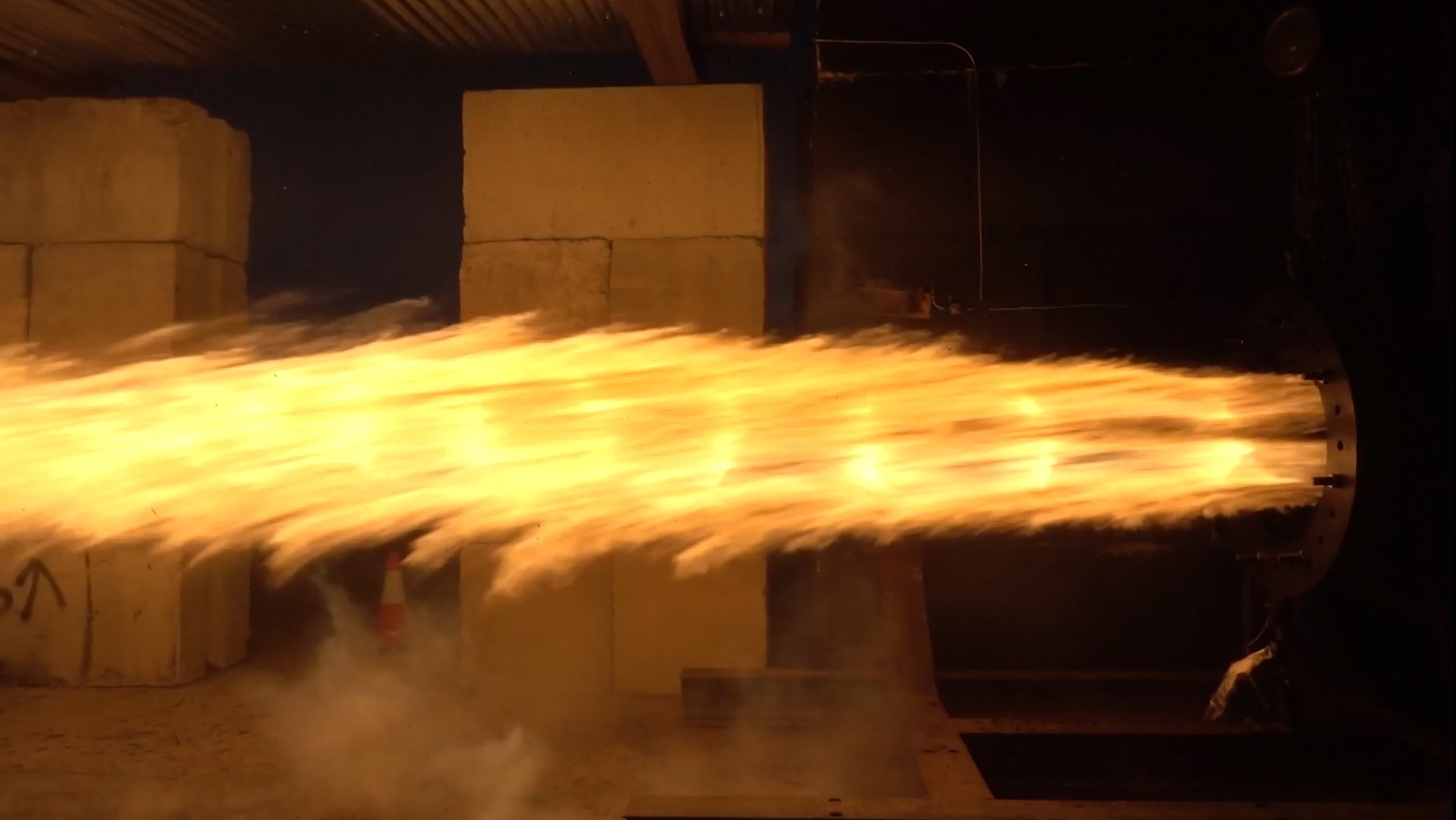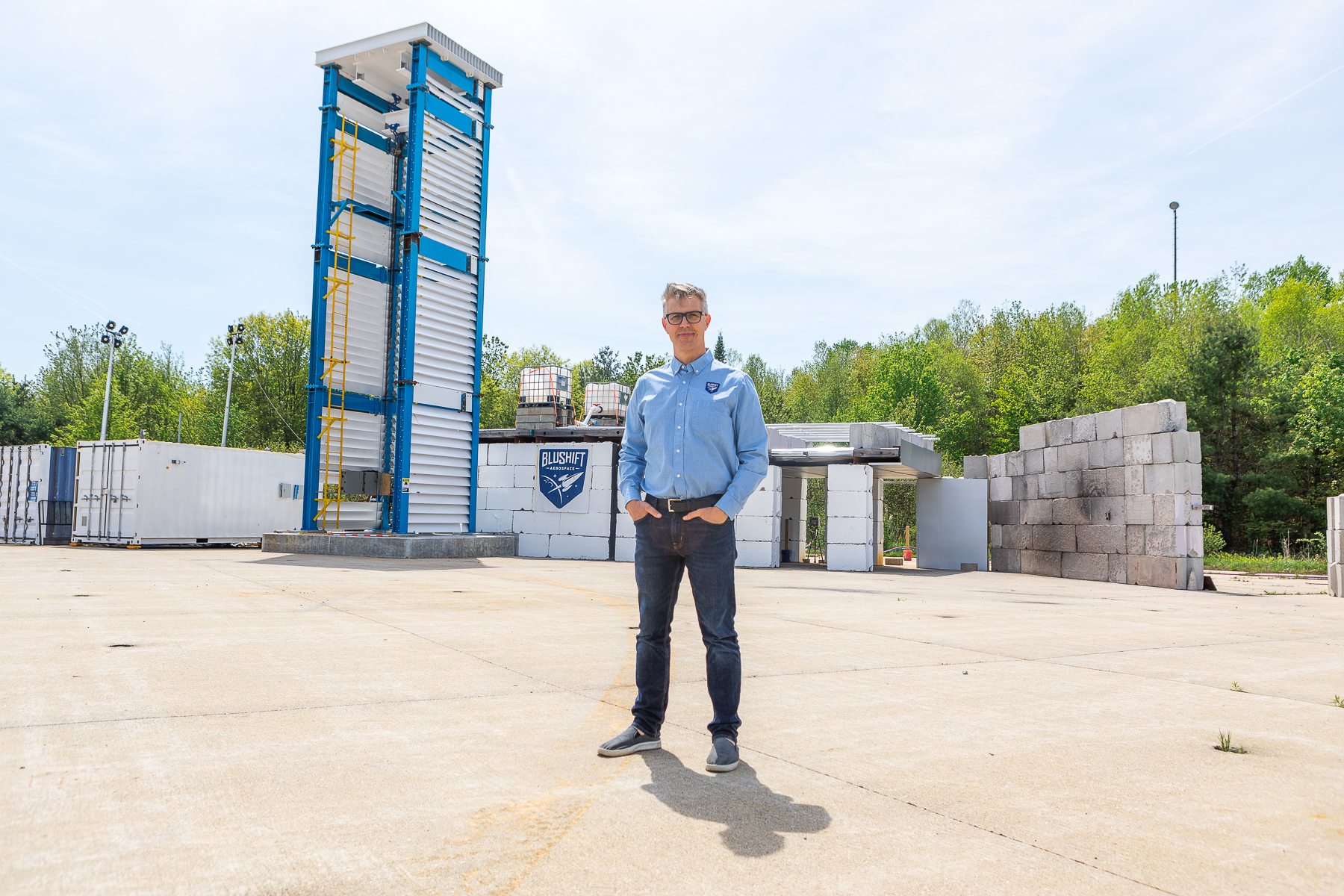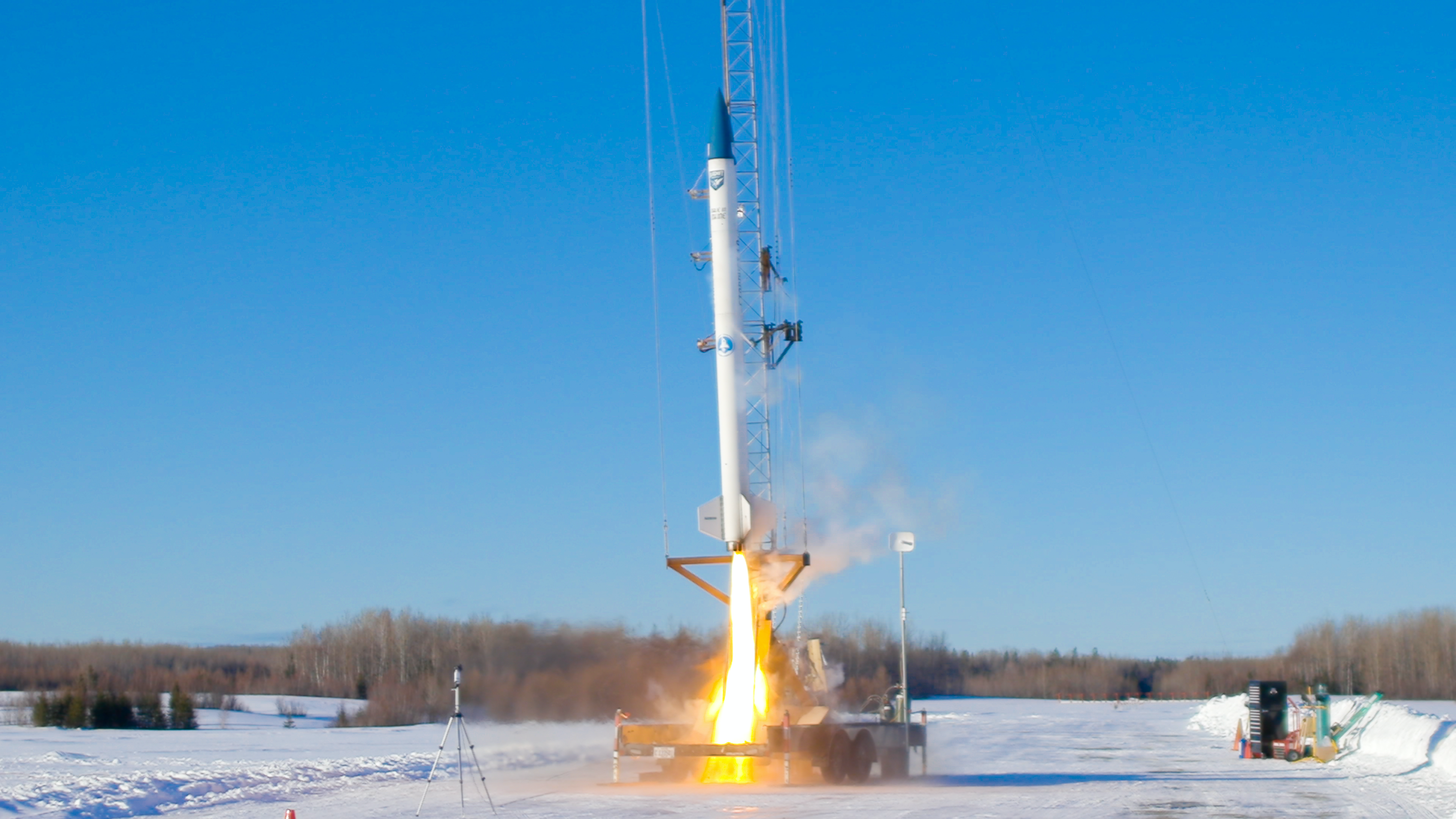After a successful engine burn test in October, Maine-based bluShift Aerospace is planning for its next big milestone: a suborbital flight test toward the end of 2025.
The rocket company, located at Brunswick Landing in southern Maine, was founded over a decade ago. In January of 2021, the company carved its niche in space history when it became the first to commercially use non-toxic biofuel to power its inaugural rocket prototype, Stardust 1.0, on a successful test launch.
According to bluShift CEO and founder Sascha Deri, the rocket’s “secret sauce” fuel contains an agricultural byproduct that can be obtained from farms around the world. After its first successful test of the propulsion technology, bluShift now looks forward to throwing its hat in the commercial launch market, developing propulsion technologies that reduce costs, and even opening its own private launch site in Maine.
At the end of October 2024, bluShift achieved its “biggest milestone” yet with the completion of a full duration burn of its engine, MAREVL (Modular Adaptable Rocket Engine for Vehicle Launch).
“We’ve had not one but two successful engine tests, and over the course of last year, we’ve done a massive overhaul of our test infrastructure. We built our flight-ready 30-foot-tall oxidizer tank and a scalable test infrastructure, which enables us to not only test Starless Rogue today, but also test lighter and lighter weight versions of our MAREVL engine technology in a full vertical stack down the road,” Deri said in an interview with Space.com.
“We’ve also been working with the Department of the Air Force to enable us to broaden our market opportunities and sell our engines as booster rockets, non-toxic, re-usable, non-munitions rated boosters to larger launch vehicles, and we’re really excited about that. Our MAREVL technology should drastically reduce the overall costs of boosters for this class of launch vehicles”

Deri said the company was able to raise more than $1.4 million recently through private investments and within just the last month, begin a $15 million equity round, which will support the goal of launching its suborbital rocket, named Starless Rogue, from commercially-licensed Spaceport America in New Mexico.
“By the end of [2025], we’re looking to do a low altitude launch of Starless Rogue with paying customer payloads on board and we’ll probably be doing it from Spaceport America,” Deri said. “And that’s really the engineering launch, although it will also be revenue generating, and we will recover the rocket. We will re-fly that vehicle to space once we have a commercial launch license with the FAA, which we’ve kicked off the efforts for already, thanks in part to a grant from the Maine Technology Institute (MTI) ($150,000) to help fund the efforts to get our commercial launch license.”

According to Deri, there’s work to be done before now and then, starting with planning for more tests including a vertical stack burn of MAREVL during the first half of 2025. bluShift also aims to construct its launch vehicle, Starless Rogue, as well as the launch infrastructure that will be used at Spaceport America during the summer, allowing the company to stay on track to launch in late fall to early winter of 2025.
“If we get our FAA commercial launch license before then we’ll just punch it right to space, but my anticipation is that we will still be waiting. We expect that by mid-2026, we’ll have received the license and we’ll do our launch to space initially targeting between 120 to 140 kilometers (75 to 87 miles) in altitude,” Deri said.
“After our initial heavy duty Starless Rogue launch, we’ll also be upgrading that vehicle with more lightweight components and some technology that will be used in our orbital vehicle to increase its performance further. That will enable us to ultimately go to 350 to 400 kilometers (~217 to 249 miles) in altitude, which means six to eight minutes of zero-G micro-gravity time for our customers’ payloads.”

In addition to rockets, bluShift hopes to focus in the next several years on establishing an orbital program to launch off the coast of Maine, making it the only private U.S. launch site with direct access to polar and sun-synchronous low Earth orbit (LEO). Deri says the process of establishing a launchpad off of a “lift boat” (a boat that can raise itself out of the water to become an offshore platform) this far north on the eastern seaboard will be dependent on funding, and include an environmental analysis and approval from the FAA.
“One of the approaches that we’re taking on is crawl, walk, and run (and then dash). Crawl is to get to a supportable launch market and figure out where our competitors are not servicing customers. We found out that the number one niche was not sending people up, but sending research up for more time than anyone else is doing,” Deri said.
“Walk, that’s a clustered booster to enhance the upmass capabilities of medium lift rockets with reusable, less-expensive, non-munition rated engines.”
“Run, that’s doing orbital. By that point, we’ve tested out their ability to launch, and we know how to do launch operations, sales, customer support, work with the FAA, and we’ve got manufacturing up and running.”
“We know how to run our engines in parallel and we’re already working with customers who are even at a suborbital level creating small satellite systems, like CubeSats. And, we knew how to do recovery on the ocean,” Deri added.
Once up and running, bluShift hopes to expand its presence by adding more launch locations using its lift boat concept to allow the company to launch from more locations off the U.S. coasts. Such a capability would enable bluShift to offer versatile launch solutions to different orbits in a quick and responsive fashion.